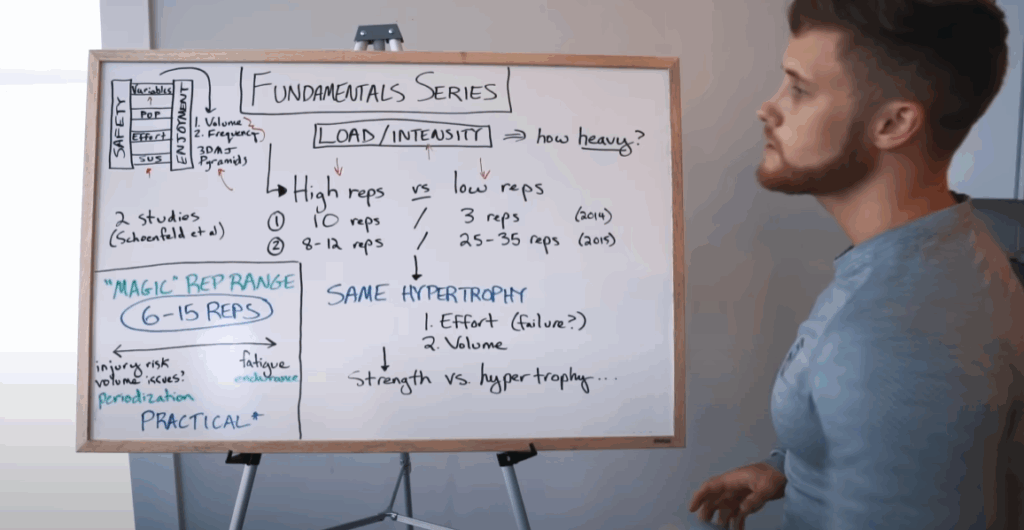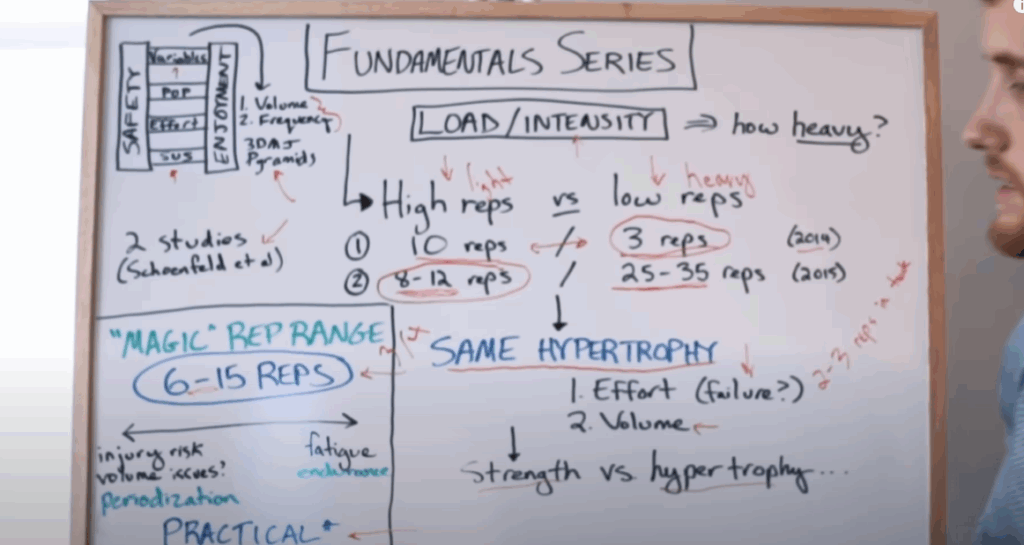As a strength and conditioning coach with two decades of experience, I’ve seen countless training splits, programs, and methodologies. One of the most persistent debates in the fitness world revolves around a seemingly simple question: how heavy should you lift? This isn’t just a matter of preference; it’s a fundamental question with a significant impact on your results. The answer isn’t as simple as “lift heavy” or “do high reps.” The truth is far more nuanced, and understanding it is key to building a robust physique and a sustainable training practice.
Before we dive deep, let’s quickly recap some foundational principles we’ve established in our training philosophy. A successful routine is built on a solid base:
- Safety and Enjoyment: Your program must be something you can stick with long-term without getting injured. If you don’t enjoy it, you won’t do it.
- Effort and Progressive Overload: You must train hard and consistently strive to do more over time, whether that’s adding weight, reps, or improving form.
- Volume and Frequency: The amount of work you do and how often you do it are primary drivers of growth. A good starting point for most is 10–20 sets per muscle group per week, with each muscle group trained at least twice weekly.
With that foundation in place, let’s tackle the next critical variable: load and intensity, which in scientific terms, refers to the weight you’re lifting.

The Age-Old Debate: Heavy vs. Light
For years, the fitness community has been divided into two main camps: those who swear by heavy, low-rep training and those who champion high-rep, lightweight sets for a better “pump.” The low-rep crowd argues that lifting heavy is the only way to build significant muscle tension, which is the primary signal for muscle growth. The high-rep camp believes that breaking down muscle fibers and causing metabolic stress through fatigue is the key.
So, who’s right? Recent research from leading exercise science groups, like the one led by Dr. Brad Schoenfeld, has shed a great deal of light on this. A series of studies conducted in 2014 and 2015 compared muscle growth across a broad spectrum of rep ranges:
- Heavy, Low-Rep Training: Think 3 reps, akin to powerlifting.
- Moderate-Rep Training: The classic bodybuilding rep range of 10 reps.
- Light, High-Rep Training: Pushing reps into the 25–35 range.
The results were a revelation. When volume (total work done) and effort were matched across all groups, the amount of muscle growth (hypertrophy) was remarkably similar. This means that whether you lift heavy for low reps, or light for high reps, you can still stimulate significant muscle growth. The key takeaway is that the weight itself isn’t the magic bullet—it’s the combination of volume, effort, and proximity to muscular failure.
A critical point here is that “effort” was controlled by having all sets performed to muscular failure. While I don’t advocate for taking every set to failure (it’s best reserved for the last set of the last exercise for a body part to manage recovery), this research shows that you must be training with a high level of intensity—that is, pushing your muscles close to their limit.
The Practical Rep Range: A Spectrum of Options
While a broad range of rep schemes can stimulate hypertrophy, does that mean they’re all equally practical or effective in a real-world training program? Not necessarily. This is where we need to consider some important caveats:
- Strength vs. Hypertrophy: If your goal is purely muscle size, then any rep range can work. However, if you also want to get stronger, you must incorporate heavy, low-rep training. In the studies mentioned, the heavy-weight groups saw significantly greater strength gains.
- Fatigue and Recovery: Extremely high-rep sets (15+) can be incredibly fatiguing. The metabolic stress and lactate buildup can lead to prolonged soreness and hinder your ability to recover between workouts, which can negatively impact your overall training volume and frequency.
- Injury Risk: On the other end of the spectrum, very heavy, low-rep training (under 6 reps) comes with an increased risk of injury. The stress on your joints and connective tissues is much higher. The Schoenfeld study even noted a higher dropout rate in the heavy-weight group, suggesting that many participants simply couldn’t handle the physical toll.
- Volume Accumulation: It’s simply not efficient to accumulate a high training volume with very low reps. A single set of 10 reps might be the volume equivalent of three or four sets of three reps. This means heavy, low-rep workouts tend to be much longer and more taxing to achieve the same amount of volume.
Considering these factors, there’s a good reason why the 6–15 rep range is often called the “hypertrophy sweet spot” by many coaches. It’s the most efficient and safest way to accumulate a high volume of work, stimulate muscle growth, and manage fatigue and injury risk.

The Smart Approach: Periodization and Variety
So, what’s the best way to apply this knowledge? Don’t get stuck in one narrow rep range. The most intelligent approach is to use a spectrum of rep ranges, with the majority of your work (around 75%) falling in that 6–15 rep zone. This is where you’ll do the bulk of your volume and drive the most growth with the least risk.
For the remaining 25% of your training volume, you can strategically incorporate both heavy and light work:
- Heavy, Low-Rep Work (under 6 reps): Occasionally cycling in heavy sets can improve your strength. This makes you stronger in your 6–15 rep sets, which in turn leads to more tension on the muscle and potentially more growth over time.
- Light, High-Rep Work (15+ reps): Adding some high-rep sets can improve muscular endurance and work capacity, allowing you to handle more volume without fatiguing as quickly. These sets also cause a significant metabolic stress, which is a known signal for hypertrophy.

This kind of varied approach is a simple form of periodization, a concept we’ll explore in more detail later. For now, the key takeaway is this: you have a lot of flexibility in how you train. Don’t be dogmatic about one specific rep range. Instead, focus on training hard, managing your total volume, and using a variety of rep schemes to stay safe, avoid plateaus, and enjoy your journey to a bigger, stronger physique.
I’ll be covering exercise selection in our next installment, so make sure you’re subscribed so you don’t miss out!



